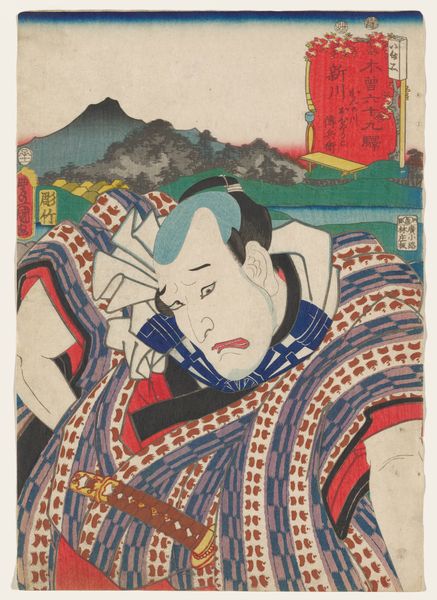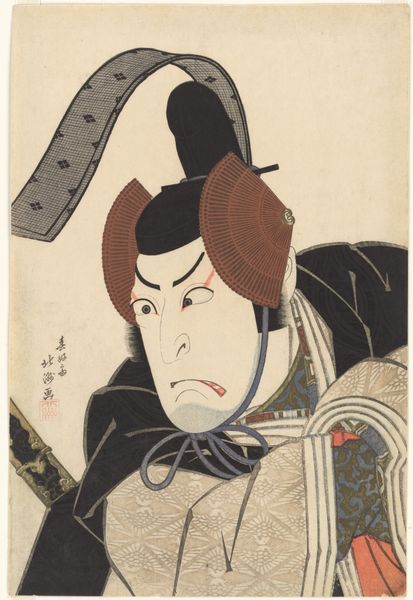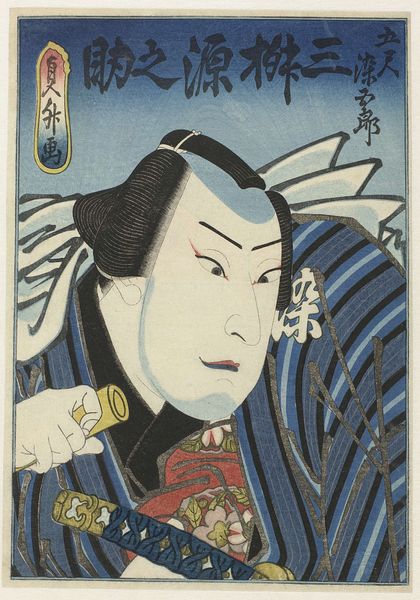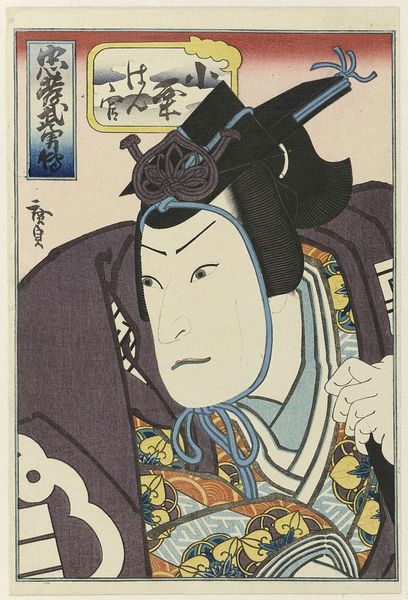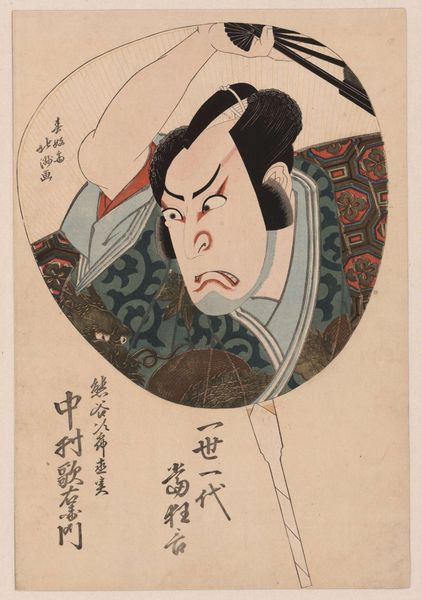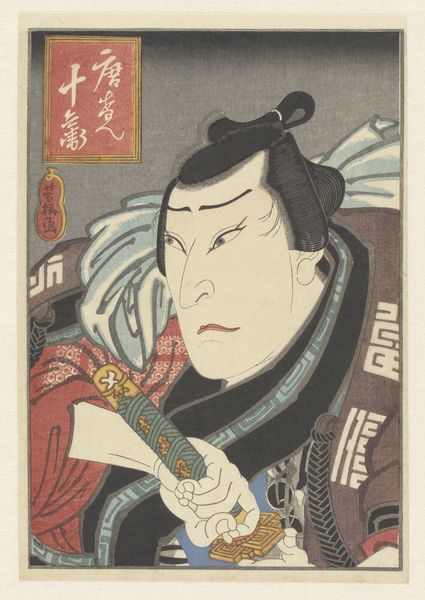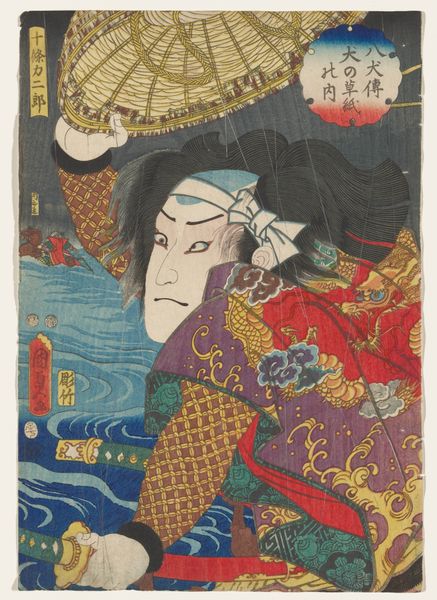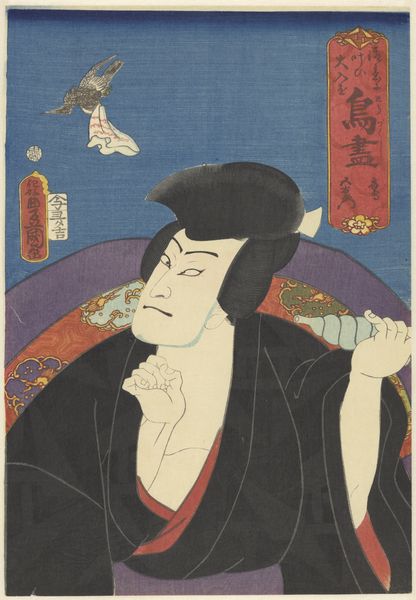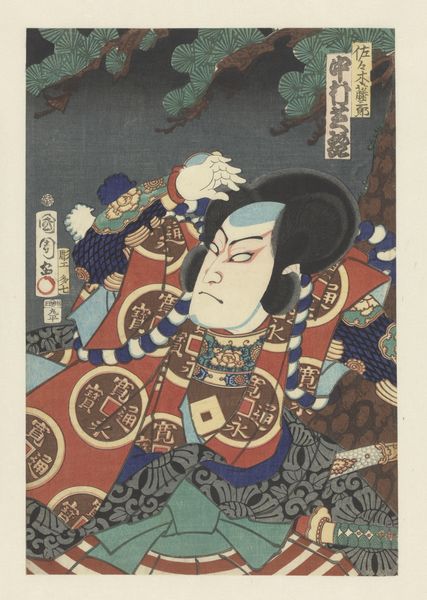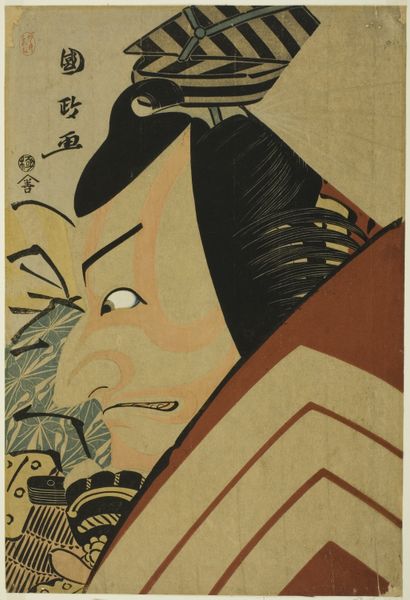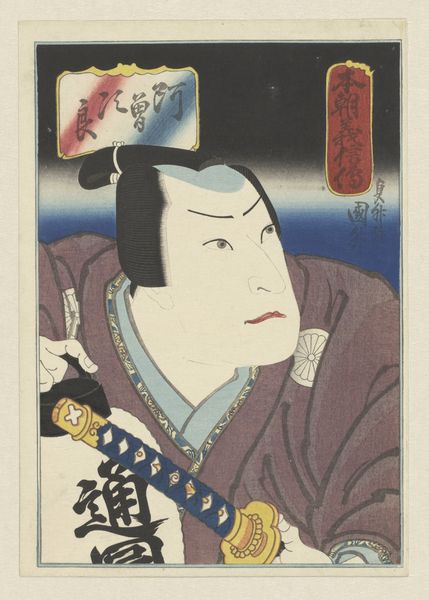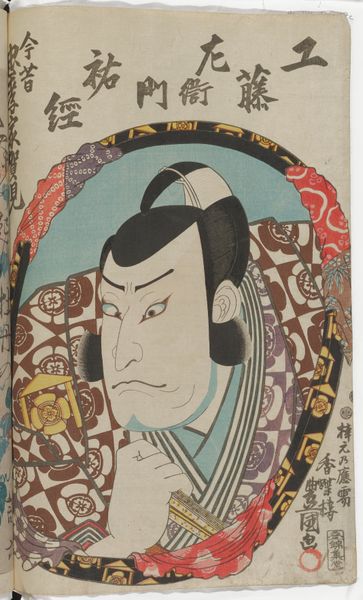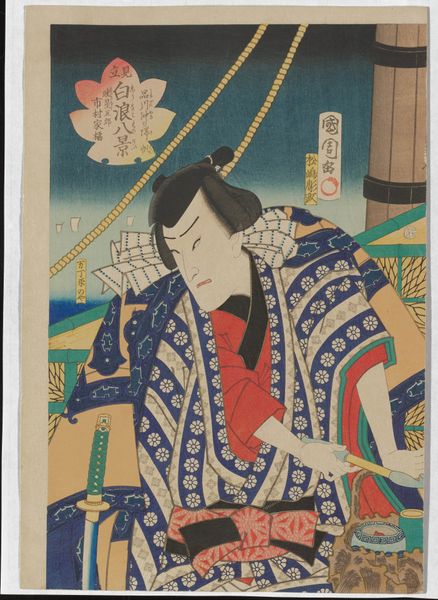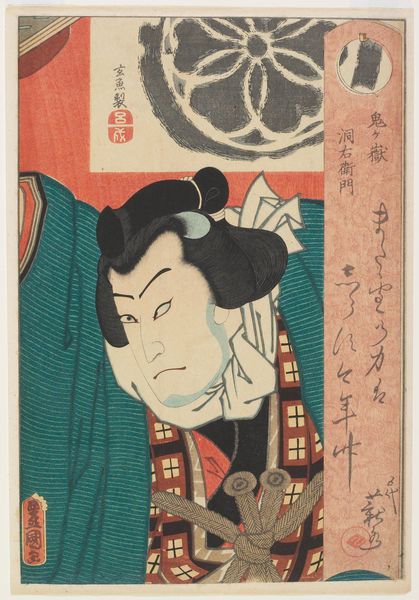
Dimensions: 14 3/8 × 9 5/8 in. (36.5 × 24.5 cm) (image, sheet, vertical ōban)
Copyright: Public Domain
This woodblock print of a Kabuki scene was made by Utagawa Kunisada in 19th century Japan. The floating world of Kabuki theater exerted a powerful influence on the cultural imagination of the Edo period. Woodblock prints were popular amongst the rising merchant class in Japan, and many depicted famous actors in character. The actor’s stylized makeup and costume, the play’s literary references, and even the publisher’s seal all act as cultural codes. These codes helped audiences understand the characters and narratives. Kunisada became the most commercially successful designer of ukiyo-e woodblock prints. His prints reflect the social and political context of the time. The Tokugawa shogunate, the ruling military dictatorship of Japan, had imposed strict censorship laws on the printing industry. In order to fully understand Kunisada's prints, art historians have to analyze a wide range of visual and textual sources, from playbills and popular literature to government records. Close attention to the social and institutional history of Edo-period Japan helps us understand the print’s cultural significance.
Comments
No comments
Be the first to comment and join the conversation on the ultimate creative platform.
